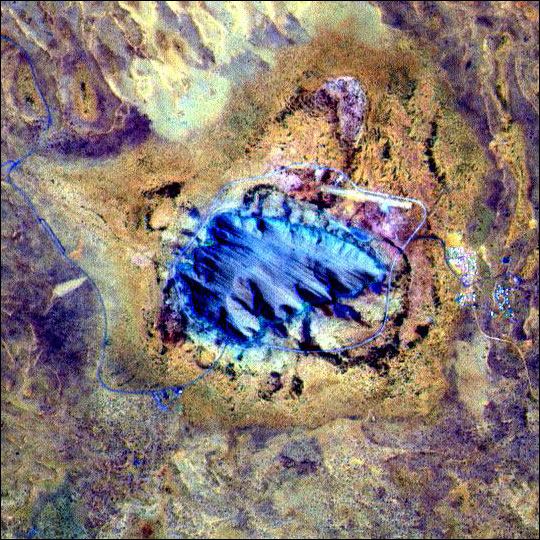


larger images:
Close-up of Uluru
Uluru and Olgas
Uluru (the Aboriginal name for Ayers Rock) is located in the remote south-west corner of the Northern Territory, roughly in the center of the Australian continent. The area surrounding the Rock and the nearby Mt. Olga (also called Kata Tjuta, or sometimes “the Olgas”) is all part of Uluru - Kata Tjuta National Park, which is administered jointly by the Australian government and the Aboriginal community. The nearest town of any size is Alice Springs (pop. 26,000), which is about 275 miles away by road.
Uluru lives up to its status as the world’s most famous monolith - rising 348 metres above the surrounding plain, occupying an area of 3.33 sq km, and with a girth of 9.4 km. The sandstone rock is especially impressive at dawn and sunset when the red rock spectacularly changes hue. There are walks around the base of the rock which pass caves, rock art and sacred Aboriginal sites.
This image was acquired by Landsat 7's Enhanced Thematic Mapper plus (ETM+) sensor on October 16, 1999. This is a false-color composite image made using shortwave infrared, infrared, and blue wavelengths (ETM+ bands 7, 4, and 1). The larger area image that includes the Olgas has also been sharpened using the sensor's panchromatic band.
Image provided by the Goddard Space Flight Center's Landsat team and the Australian ground receiving station teams.